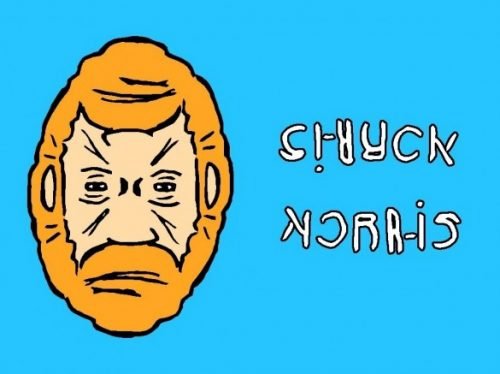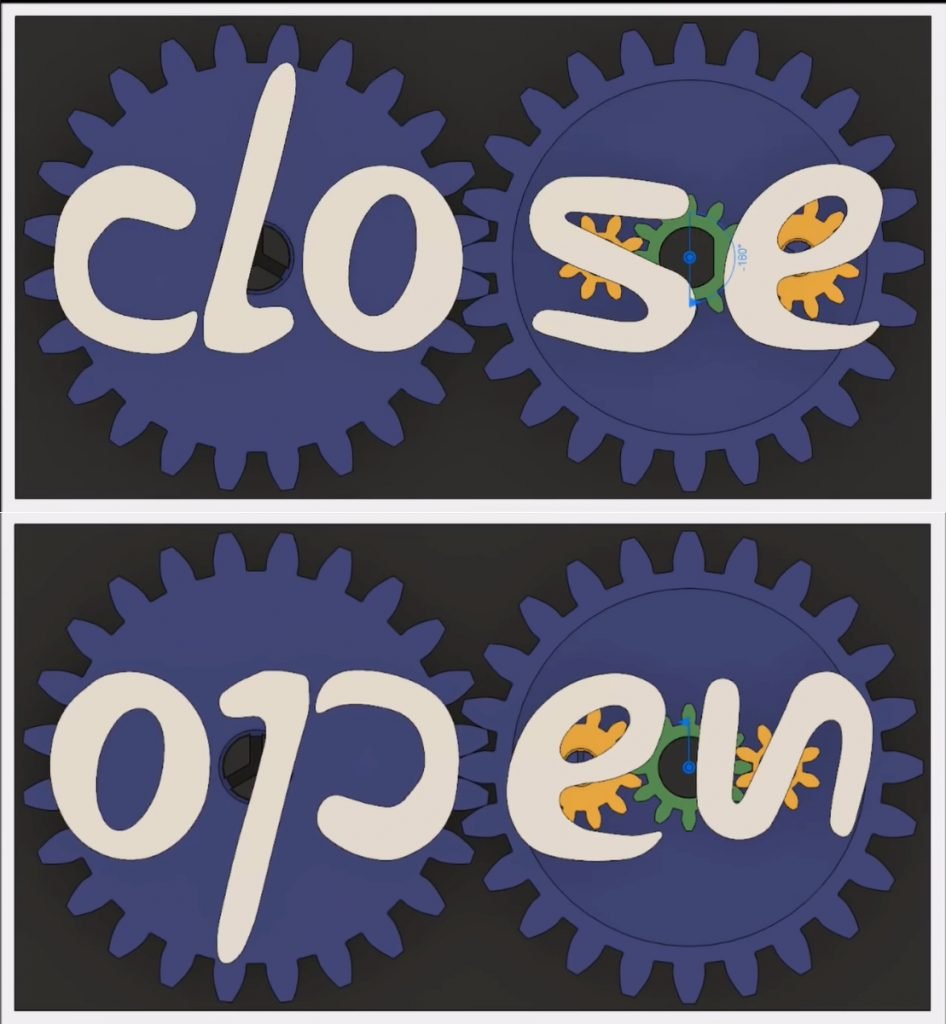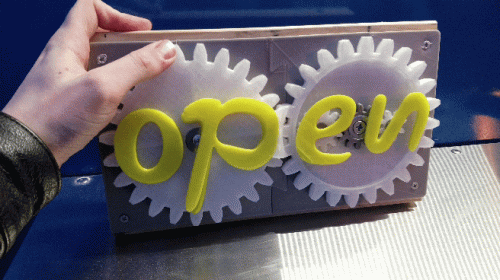Toisilla ihmisillä on kyky lukea tekstiä nurinpäin. Itse olen tällaisen treenannut niinä aikoina kun taloudessa oli vain yksi sanomalehti ja useampi lukijaa – Joku luki aina tekstiä väärältä puolelta lehteä.
Tässä kyltissä ei tarvitse lukea tekstiä väärinpäin, mutta se hyödyntää kirjainten samankaltaisuutta kääntämällä niitä ylösalaisin.
Oheisella videolla esitellään tämä kääntyvä teksti:
3d-mallin voi ladata Thingversestä: Open/Closed Sign.
Kyltin voi toki askarrella myös muutenkin:
Lisätietoa useammin päin luettavista teksteistä löytyy wikipediasta: Ambigram / Ambigrammi
Ambigrammit ovat grafiikan muoto, jossa pyritään muotoilemaan sanasta sellainen, että se on luettavissa myös 180 astetta käännettynä. Ambigrammi voi olla myös kuva tai logo. Sana ambigrammi tulee sanoista ambi ’kumpikin’ ja gram ’sana’.


Ambigrams are exercises in graphic design that play with optical illusions, symmetry and visual perception. Some ambigrams feature a relationship between their form and their content. Ambigrams usually fall into one of several categories:
3-Dimensional
A design where an object is presented that will appear to read several letters or words when viewed from different angles. Such designs can be generated using constructive solid geometry.[citation needed]
Chain
A design where a word (or sometimes words) are interlinked, forming a repeating chain. Letters are usually overlapped meaning that a word will start partway through another word. Sometimes chain ambigrams are presented in the form of a circle.[27]
Dihedral
A natural mirror-image ambigram consisting of numerical digits.
Figure-ground
A design in which the spaces between the letters of one word form another word.[27]
Fractal
A version of space-filling ambigrams where the tiled word branches from itself and then shrinks in a self-similar manner, forming a fractal. See Scott Kim’s fractal of the word ”TREE” for an animated example.[28]
Mirror-image
A design that can be read when reflected in a mirror, usually as the same word or phrase both ways. Ambigrams that form different words when viewed in the mirror are also known as glass door ambigrams, because they can be printed on a glass door to be read differently when entering or exiting.[27]
Multi-Lingual
An ambigram that can be read one way in one language and another way in a different language. Multi-lingual ambigrams can exist in all of the various styles of ambigrams, with multi-lingual perceptual shift ambigrams being particularly striking. The name sinosign has been proposed for the case of the shift being between Latin script and Chinese script.[citation needed]
Natural
A natural ambigram is a word that possesses one or more of the above symmetries when written in its natural state, requiring no typographic styling. For example, the words ”dollop”, ”suns” and ”pod” form natural rotational ambigrams. In Korean, 곰 (bear) and 문 (door) form a natural rotational ambigram. In some fonts, the word ”swims” forms a natural rotational ambigram. The word ”bud” forms a natural mirror ambigram when reflected over a vertical axis, as does ”ليبيا”, the name of the country Libya in Arabic. The words ”CHOICE” and ”OXIDE”, in all capitals, form natural mirror ambigrams when reflected over a horizontal axis. The longest such word is CHECKBOOK. The word ”TOOTH”, in all capitals, forms a natural mirror ambigram when its letters are stacked vertically and reflected over a vertical axis. See the article transformation of text for a discussion of letter symmetry.[citation needed]
Perceptual Shift (Oscillation)
A design with no symmetry but can be read as two different words depending on how the curves of the letters are interpreted.[27]
Rotational
A design that presents several instances of words when rotated through a fixed angle. This is usually 180 degrees, but rotational ambigrams of other angles exist, for example 90 or 45 degrees. The word spelled out from the alternative direction(s) is often the same, but may be a different word to the initially presented form. A simple example is the lower-case abbreviation for ”Down”, dn, which looks like the lower-case word up when rotated 180 degrees.[citation needed]
Strobogrammatic
A natural rotational ambigram consisting of numerical digits.
Space-Filling
Similar to chain ambigrams, but tile to fill the 2-dimensional plane.[citation needed]
Spinonym
An ambigram in which all the letters are made of the same glyph, possibly rotated and/or inverted. WEB is an example of a word that can easily be made into a spinonym. Previously called rotoglyphs or rotaglyphs.[29]
Symbiotogram
An ambigram that, when rotated, can be read as a different word than the original, e.g., ”LIFE” would read as ”DEATH”.[30]


